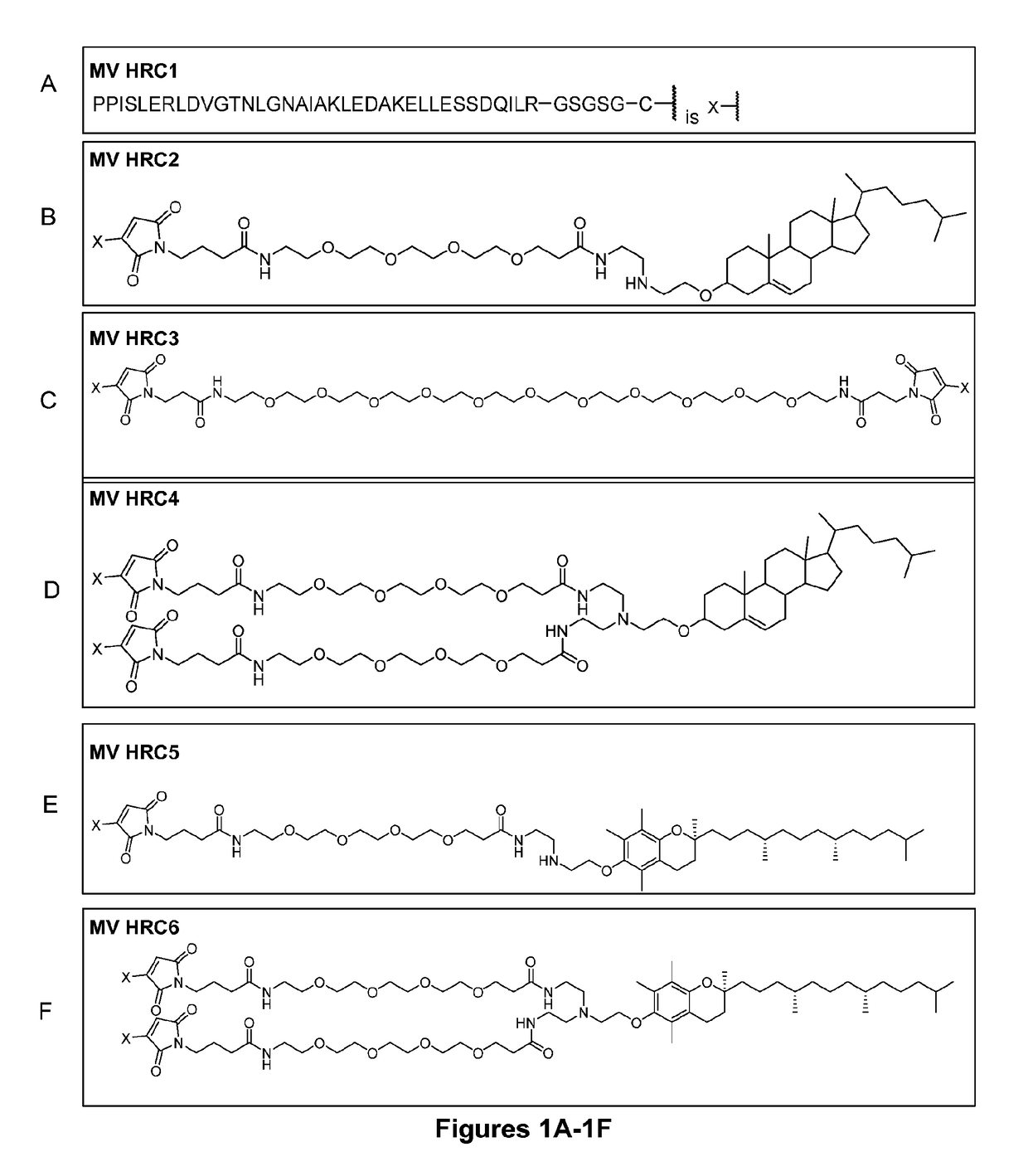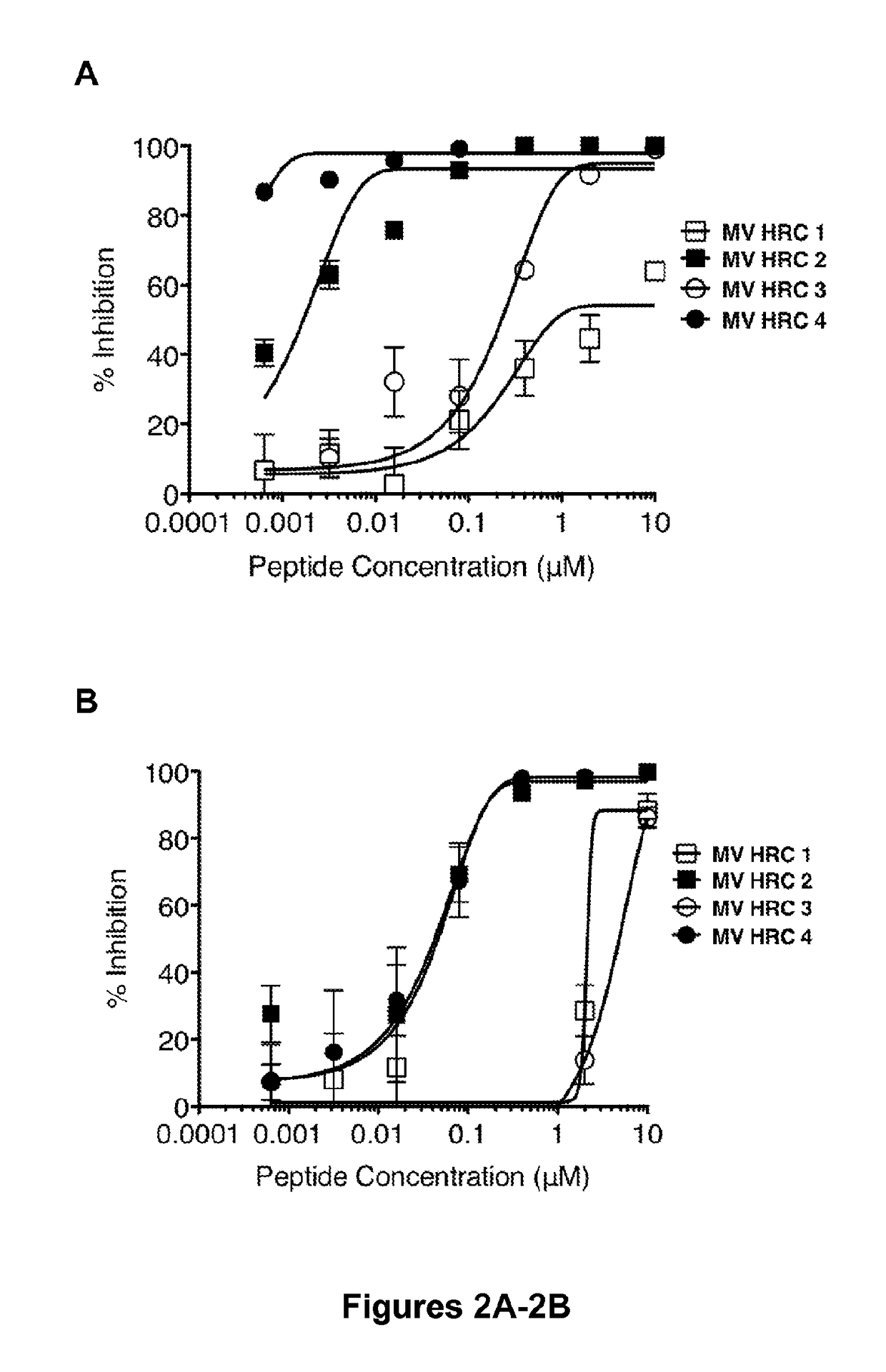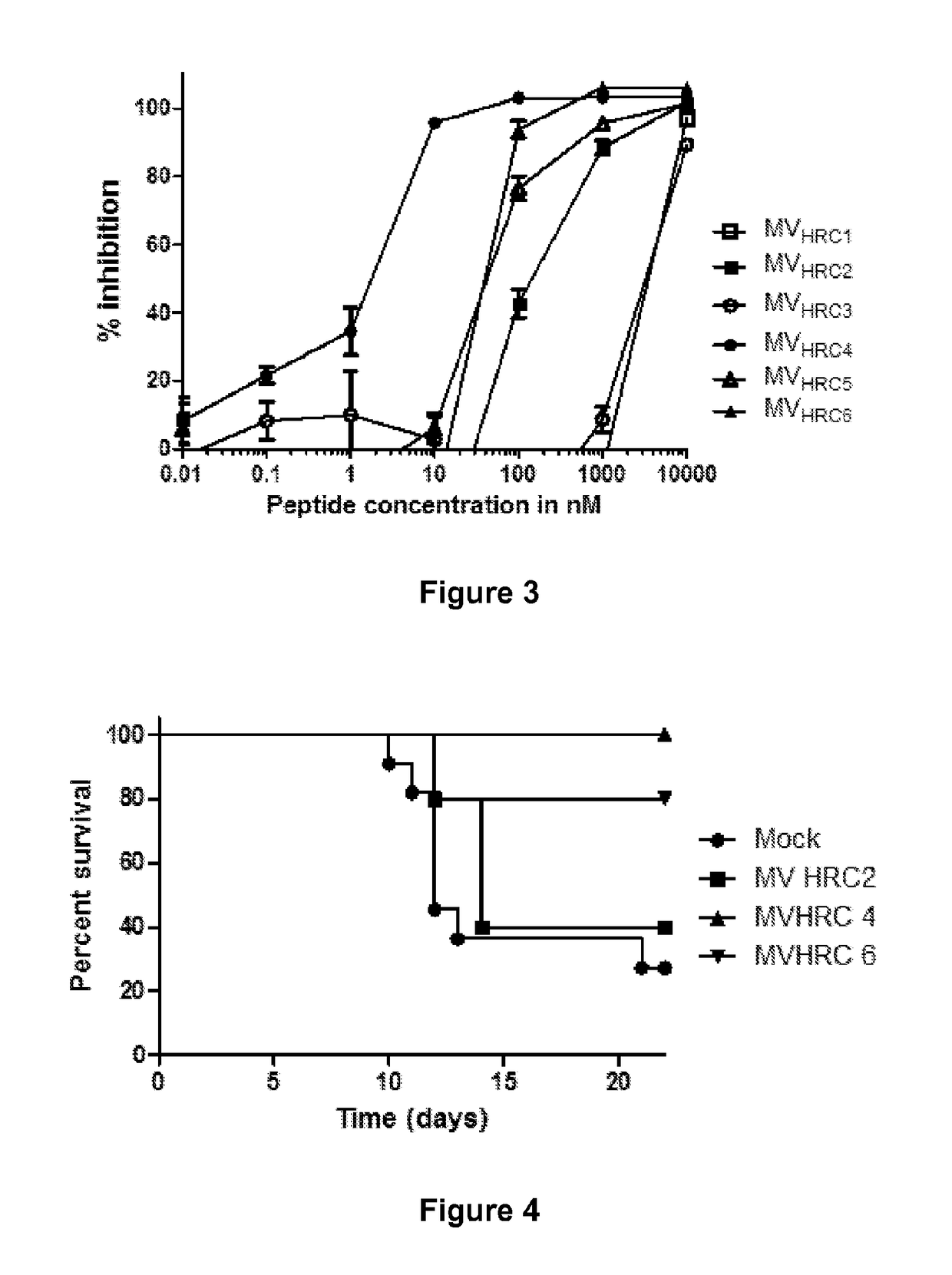Inhibitors of fusion between viral and cell membranes as well as compositions and methods of using them
a cell membrane and inhibitor technology, applied in the field of inhibitors of fusion between viral and cell membrane, can solve the problems of time-consuming and laborious sequence-specific optimization, and extensive morbidity and mortality worldwide, and achieve the effects of facilitating relative movement, improving the efficacy and pharmacokinetics of peptide inhibitors, and facilitating the presentation of fusogenic peptides
- Summary
- Abstract
- Description
- Claims
- Application Information
AI Technical Summary
Benefits of technology
Problems solved by technology
Method used
Image
Examples
example 1
Measles Virus Peptide Fusion Inhibitors
[0107]The antiviral activity of peptides derived from the HRC region of the fusion protein differs considerably among enveloped viruses (Harrison, “Viral Membrane Fusion,”Nat. Struct. Mol. Biol. 15:690-8 (2008); Pessi et al., “A General Strategy to Endow Natural Fusion-Protein-Derived Peptides with Potent Antiviral Activity,”PLoS One 7:e36833 (2012); Vigant et al., “Hendra and Nipah Infection: Pathology, Models and Potential Therapies,”Infect. Dis. Drug Targets 11:315-36 (2011); and Eckert et al., “Mechanisms of Viral Membrane Fusion and its Inhibition,”Ann. Rev. Biochem. 70:777-810 (2001), which are hereby incorporated by reference in their entirety). The potency, especially for weak inhibitors, can be increased by peptide engineering strategies. Based on previous experience with optimizing antiviral properties of HRC-specific peptides (Porotto et al., “Inhibition of Nipah Virus Infection In Vivo: Targeting an Early Stage of Paramyxovirus Fusi...
example 2
n of Wild-Type MV Entry by MV F Derived Peptides
[0109]The inhibitory activities of MV HRC 1, MV HRC 2, MV HRC 3 and MV HRC 4 (FIG. 1) against wt MV G954 were assessed in plaque reduction assays (FIG. 2A). Both peptides containing the cholesterol moiety (MV HRC2 and HRC4) performed better than their unconjugated counterparts (MV HRC1 and HRC3). While for the unconjugated peptides the IC50 values were ˜7000 nM (MV HRC 1) and ˜300 nM (MV HRC3), for the cholesterol-conjugated peptides the IC50 values were only ˜2 nM (MV HRC2) and ˜0.5 nM (MV HRC4). The dimeric peptide with cholesterol outperformed the other peptides over a wide range of concentrations. The data in FIG. 2A indicate that dimerization and cholesterol conjugation independently improve the overall efficacy of the entry inhibitor against MV, and that the effects of cholesterol and of dimerization are additive. Similar results were obtained with the MV-IC323-EGFP wt strain.
example 3
Virus is Curtailed by the Dimeric Lipid-Conjugated Peptides
[0110]For clinical utility, the ability of an antiviral agent to prevent multiple rounds of infection is key (Talekar et al., “Infection of Primary Neurons Mediated by Nipah Virus Envelope Proteins: Role of Host Target Cells in Antiviral Action,”J. Virol. 85:8422-6 (2011), which is hereby incorporated by reference in its entirety). A multicycle replication assay (Porotto et al., “Simulating Henipavirus Multicycle Replication in a Screening Assay Leads to Identification of a Promising Candidate for Therapy,”J. Virol. 83:5148-5155 (2009), which is hereby incorporated by reference in its entirety) was adapted to assess the effect of the cholesterol-conjugated peptides on viral infection in Vero SLAM cells after infection, with the use of a MV wt virus carrying the EGFP gene, MV-IC323-EGFP (Hashimoto et al., “Measles Virus Entry as Examined by a Recombinant Virus Expressing Green Fluorescent Protein,”Uirusu. 52:169-75 (2002), wh...
PUM
| Property | Measurement | Unit |
|---|---|---|
| body weight | aaaaa | aaaaa |
| concentration | aaaaa | aaaaa |
| pharmaceutical composition | aaaaa | aaaaa |
Abstract
Description
Claims
Application Information
 Login to View More
Login to View More - R&D
- Intellectual Property
- Life Sciences
- Materials
- Tech Scout
- Unparalleled Data Quality
- Higher Quality Content
- 60% Fewer Hallucinations
Browse by: Latest US Patents, China's latest patents, Technical Efficacy Thesaurus, Application Domain, Technology Topic, Popular Technical Reports.
© 2025 PatSnap. All rights reserved.Legal|Privacy policy|Modern Slavery Act Transparency Statement|Sitemap|About US| Contact US: help@patsnap.com



